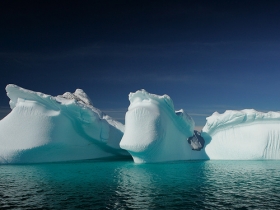What's the Evidence for Climate Change?

The National Science Foundation funds thousands of researchers at 1,900 universities and institutions with a budget of $9.5 billion for fiscal 2009 (including $3.0 billion provided through the American Recovery and Reinvestment Act).
Just a fraction of that goes directly to climate research, but that fraction is growing. President Obama's fiscal year 2010 budget for NSF doubles funds for climate research to about $500 million.
So what have all those climate researchers learned with the hundreds of millions already spent?
Today the NSF put out a special report detailing known changes to the planet related to global warming. These are not things that might happen, but things that have.
The highlights, directly from the NSF:
Ecologists have noted marked changes in the habitats of the species they
study —places
where they find a particular species,
changes in the dates plants first sprout and bloom, changes in plant
growth rates and even signs of evolutionary adaptation brought on by a
warming climate. In some cases, species extinctions appear linked to climate
change.
Ocean scientists have recorded higher temperatures and
higher ocean acidity, which alter the characteristics of the most
fundamental organisms of the ocean food chain. Coral reefs — some of which
have thrived for centuries — have died off suddenly as a result of ocean
temperatures that exceed the corals' ability to survive.
Polar scientists have watched vast tracts of Arctic sea ice melt away, leaving behind more open water than anyone can remember seeing during any previous Northern Hemisphere summer. Glaciologists have witnessed ice shelves — once thought too large to be influenced by anything short of cataclysmic environmental change — break up into a churning sea of icebergs in a matter of days.
Social scientists have recorded the bewilderment of indigenous people. Their cultural knowledge, which stretches back in time through numerous generations, holds no record of the kinds of environmental conditions they are encountering today.
Paleoclimatologists have discovered — through tree ring data, ice cores and other corroborating records — that the concentration of carbon dioxide, and the Earth's average temperature, are nearing levels that haven't been reached for hundreds of thousands of years.
© Imaginova Corp. All rights reserved. To subscribe or visit go to: http://www.livescience.com